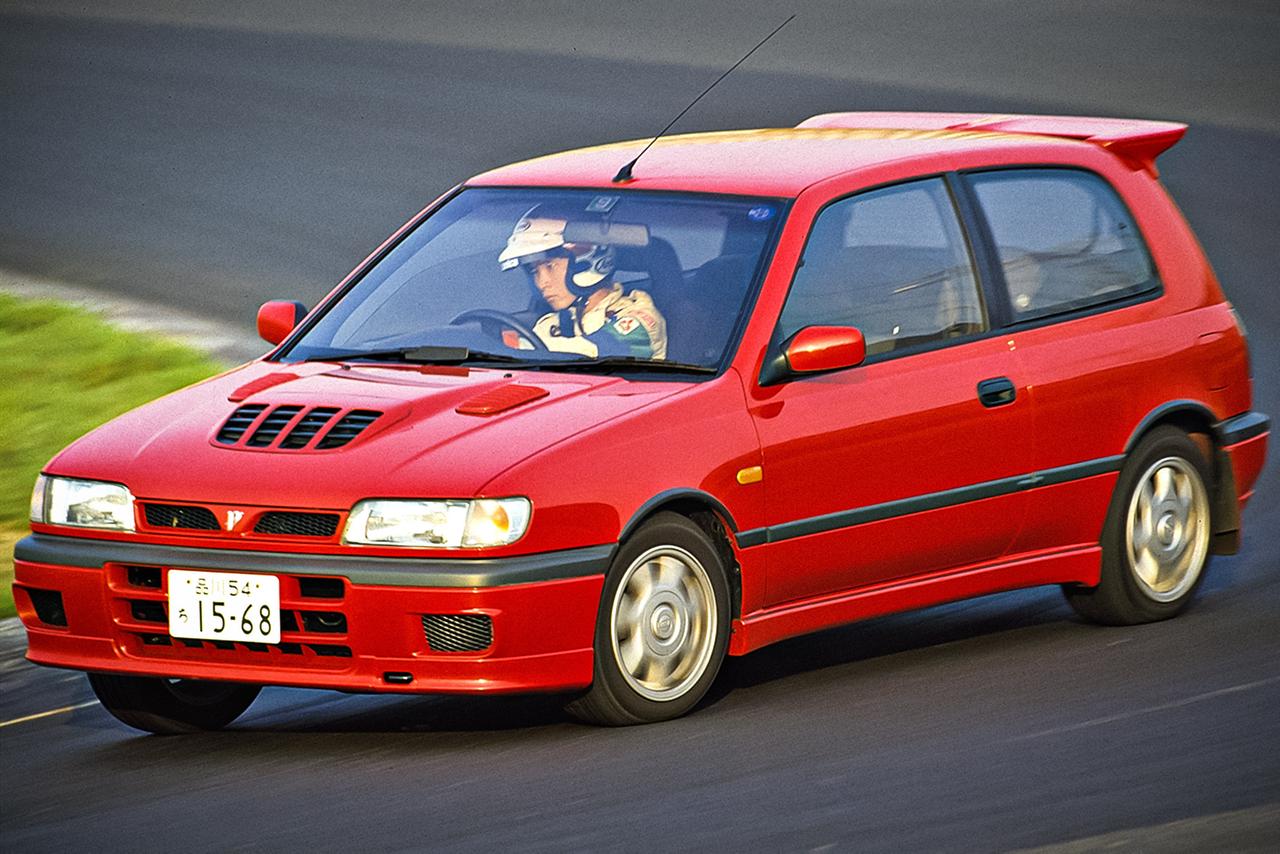We restore historical justice and pay tribute to little-known “pocket rockets”
Sports cars hiding in the skins of compact hatchbacks are reminiscent of numerous rock ‘n’ roll artists. Who will remember them now that Elvis and Little Richard got all the glory? With “hot” hatchbacks, the story is similar. Their army is large, but a large part of it lurked in the shadow of such iconic modifications as the Volkswagen Golf GTI, Peugeot 205 GTI and Lancia Delta HF Integrale. We decided to pay tribute to other members of the tribe, who once flashed across the car sky as shooting stars and are now forgotten.
Renault 11 Turbo
Let the Golf GTI adherents forgive us, but the French know how to cook “hot meals” just as well – an innate sense of beauty, rich sports traditions and a high culture of chassis tuning have made it possible to create a galaxy of magnificent compact sports cars. Take Renault, for example, with its unique mid-engined 5 Turbo and Clio V6, as well as the maddeningly hilarious Clio RS and Megane RS. But not all high-speed creations of the brand are known to this day – the three-door Renault 11 Turbo, for example, has been consigned to oblivion. And it’s a pity!

Like the Fighting Five, the hatchback was armed with a turbocharged version of the old 1.4-liter Cléon-Fonte engine, which produced 105 hp, and after the update – 115 hp. Downsizing of the mid-eighties as it is! Old Renault with a ridiculous impact makes you smile even in the days of extreme hot-hatches with a capacity of over 400 “horses”. A comparatively low-inertia compressor builds up excess pressure into the intake tract already at low revs, and a car with a curb weight of 905 kg accelerates to 100 km / h in 8.5 seconds.
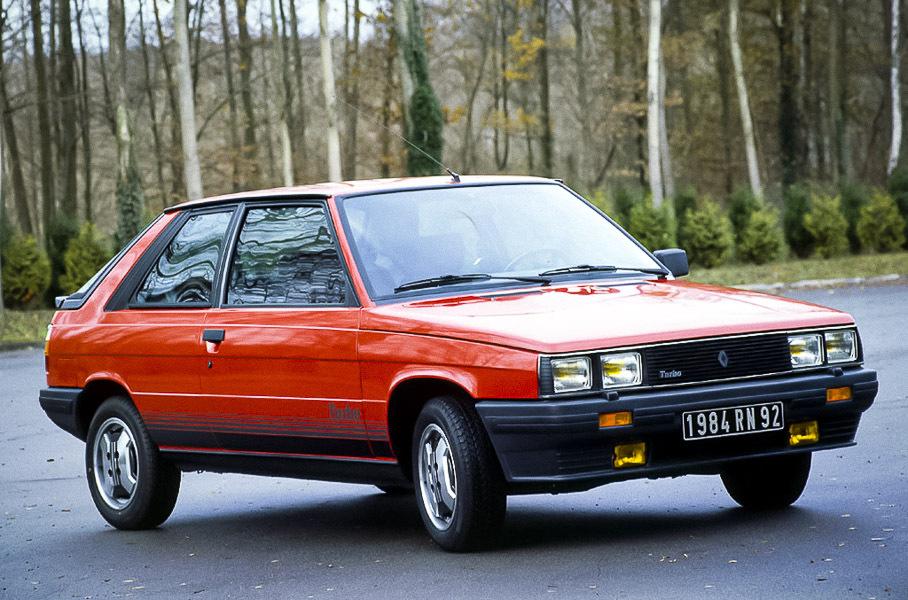

According to those who have had the pleasure of hanging out with the rare Frenchman, his suspension is tight and well-tuned. However, we are all about dynamics. You can fall in love with only one kind of body design with a panoramic rear window and a salon with a futuristic front panel, which is completely different from the dashboard of German cars. French people…
Citroen BX GTi 16v
Answer honestly – do you know why even terry petrolheads rarely remember the delightful brainchild of the “double chevron”? Personally, we are not! The exterior of the authorship of the great Marcello Gandini, waltzing on a fine line between defiant originality and repulsive courage, is just the tip of the iceberg.
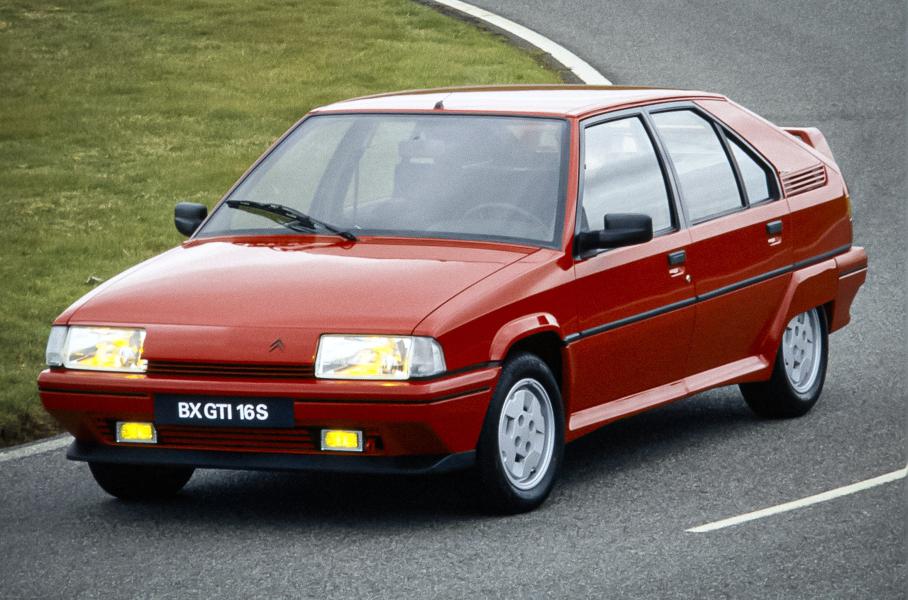
The BX, as befits a true Citroen, was equipped with a hydropneumatic suspension and was available in very interesting charged versions. For homologation in rally group B, 200 copies of the BX 4TC were built with a 200-horsepower “turbo four” with a volume of 2.1 liters – nowadays it is a little more difficult to meet such a miracle than to meet a unicorn. The requests of the mass audience were met by the BX GTi with a 1.9-liter aspirated engine, which in 1987 was one of the first among its mass compatriots to receive a 16-valve cylinder head.
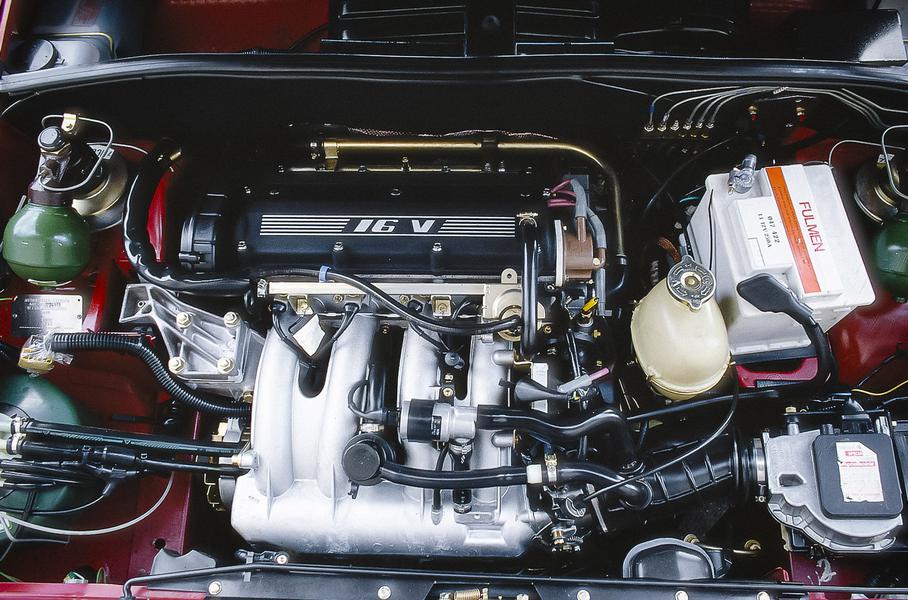
After the upgrade, the hot hatch developed 160 hp. at almost peak 6500 rpm. He gained a hundred in 7.6 seconds and developed up to 219 km / h. The BX GTi 16v stood out among its fellows not only in vigor. The tandem of a very comfortable hydropneumatic suspension and a combat engine at one time surprised even the authoritative British publication Autocar – irregularities in the curves seemed to dissolve, and the hot hatch literally floated from turn to turn without losing trajectory stability.
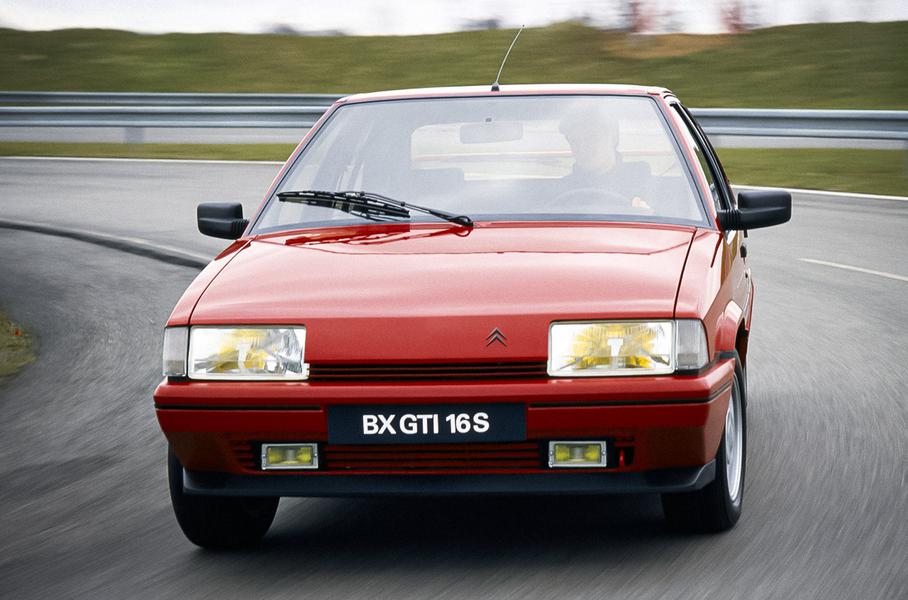

Nowadays it is very difficult to find such a car even in Great Britain – many of them donated engines for the much more popular and coveted Peugeot 205. And in Russia? It’s not even funny …
Peugeot 309 GTi
The Peugeot 309 GTi, which shared the XU9J4 engine with the aforementioned Citroen BX GTi 16v, was also not popular. However, some explanations for this can be gleaned from the amazing whirlpools of history. The “double chevron” masterpiece had external data, true French charisma and sophisticated technical solutions. Meanwhile, his brother and rival had a rather ambiguous pedigree.

Initially, the car had nothing to do with the Peugeot brand – it was supposed to be called Arizona and bear the emblem of the now defunct British brand Talbot, which from 1979 to 1994 belonged to Peugeot. In 1985, the French decided to cover up their unit and the successor Talbot Horizon was accepted into the lion’s pride as a black sheep. Despite the stretched platform from the 205 model, it could not boast of beauty and elegance like other relatives. Just a box on wheels …
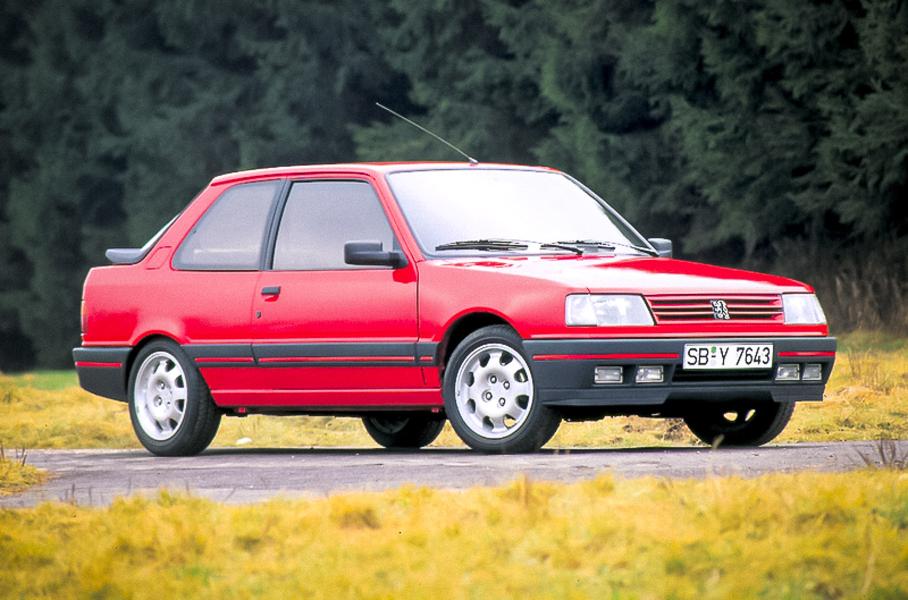

However, the Peugeot 309 was not nearly as bad as it might seem – it had better axle weight distribution, and some motorists tired of the 205’s oversteer loved its stable character. The loaded three-door version weighing 975 kg had a decent power-to-weight ratio and good handling, but the exterior made hot hatch fans pay attention to their closest rivals.
MG Maestro Turbo
The enraged British Austin Maestro is a prime example of how to build a fast car and still manage to knock everyone off. Competitors, customers … Everyone, absolutely!
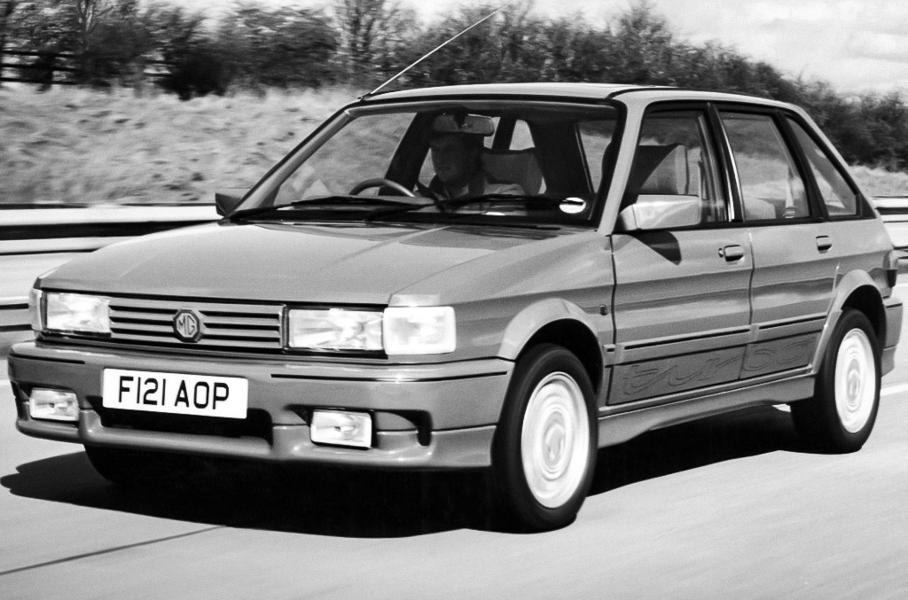
The Turbo version from the sports brand MG was a response to the growing popularity of hot hatches with 16-valve engines of the second half of the eighties. The novelty was shown to the surprised public at the Birmingham Auto Show in 1988 and, it should be noted, there was something to be impressed with. In the body Austin installed a 2.0-liter “turbo four” (152 hp and 229 Nm), a five-speed manual transmission and suspension from the MG Montego Turbo sedan. The result was one of the fastest MGs at the time, capable of accelerating to 97 km / h (60 mph) in 6.7 seconds and squeezing the maximum 212 km / h.


An immodest-looking body kit consisting of five components was developed by the engineering firm Tickford – it also installed the tail of the Maestro Turbo in its factory. And everything would be fine, but only 505 copies were born, including the car shown at the motor show – 215 red, 149 green, 92 white and 49 more black. According to the assumptions of the British club of MG owners, less than half have survived to this day.
Nissan Pulsar / Sunny GTi-R
The term “homologation rally cars” always evokes the same associations – Subaru Impreza WRX STI, Mitsubishi Lancer Evolution, Lancia Delta HF Integrale … But the list of homologation specials, of course, is much wider. One cannot help but recall the Nissan Pulsar N14 GTi-R, the cub of Godzilla Skyline GT-R! A very hot hatchback, built to the requirements of the rally group A, entered the Japanese market in 1990.
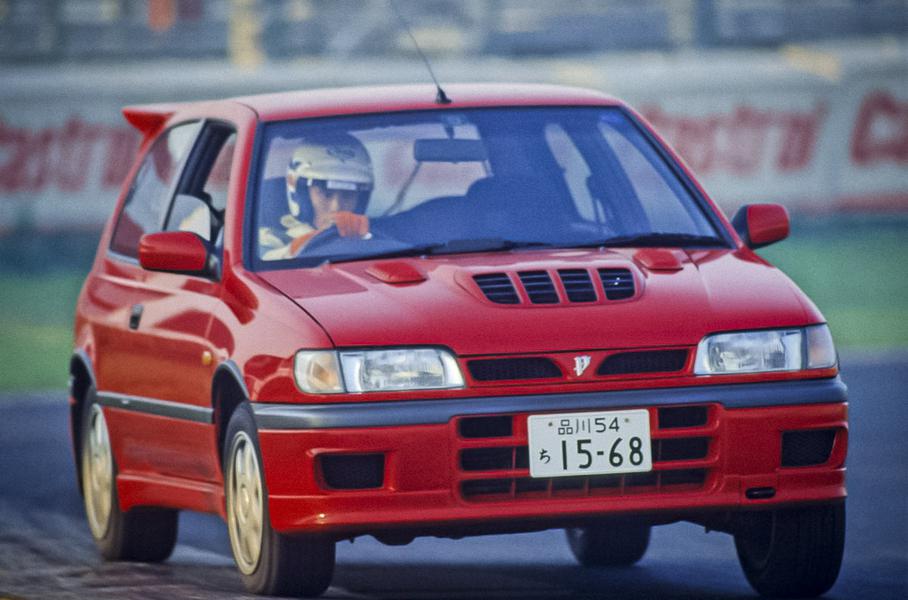
On this topic
The armament range consisted of the ATTESA (Advanced Total Traction Engineering System for All-Terrain) all-wheel drive system with a viscous-coupled center differential, front and rear differential locks, the legendary SR20DET 2.0-liter turbocharged engine, especially known from the Silvia coupe (230 hp and 280 Nm), a five-speed manual transmission. According to the power-to-weight ratio of 192 hp. per ton “Japanese” put on both blades Toyota Celica GT-Four and Lancia Delta HF Integrale 16v. It could also accelerate to 100 km / h in 5.4 seconds and was able to put the speedometer needle beyond the 230 km / h mark.

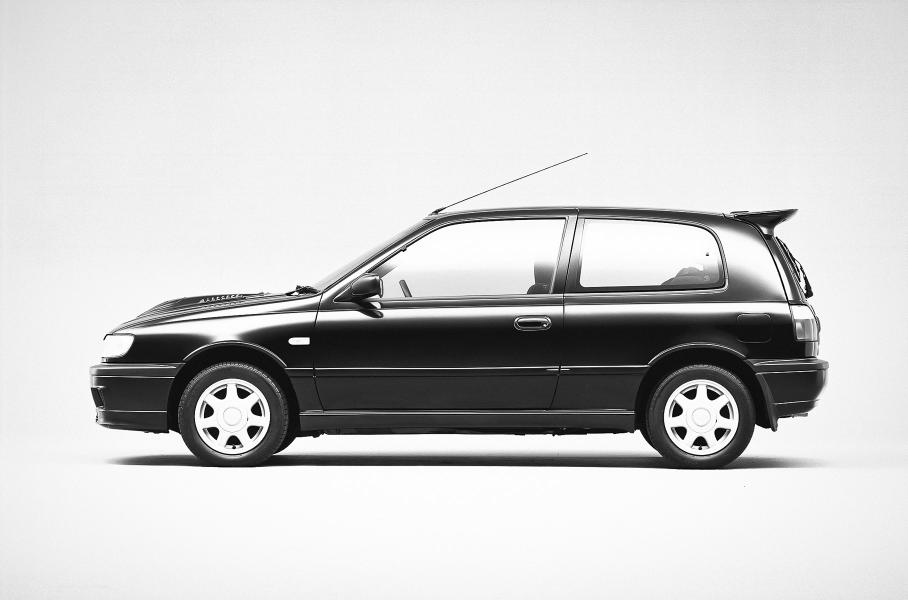
One glance at the GTi-R with a huge “nostril” on the hood, under which an intercooler is hidden, is enough to understand that this is a very smart type! The all-wheel drive system was not as smart as the ATTESA E-TS with multi-plate clutch on the Nissan Skyline GT-R, but it was quite effective.
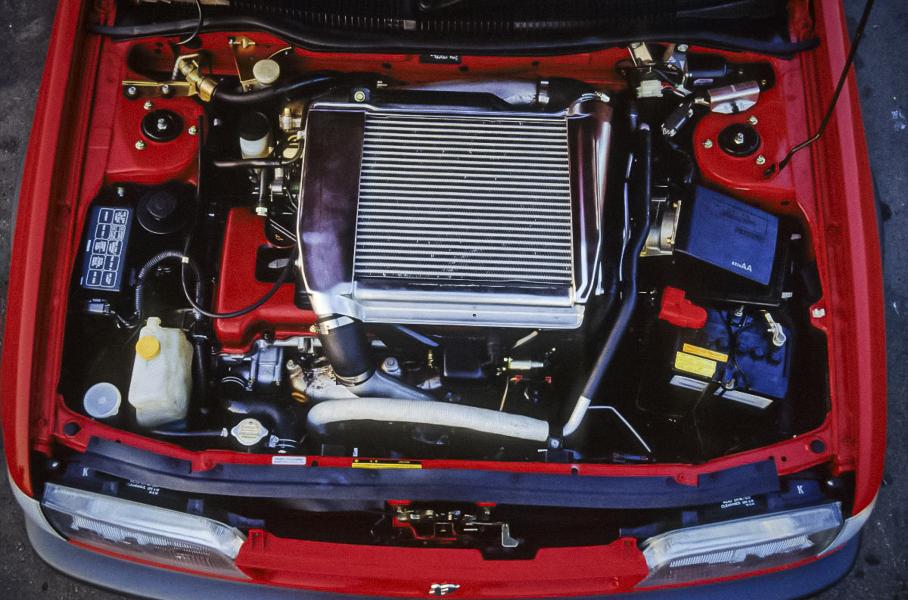
The British, who know a lot about speed and first-class steering, call the GTi-R a fantastic car and the most affordable way to punish Porsche. That’s it, no more and no less! In 1991, a sports car named Sunny made it to the shores of Foggy Albion, but buyers were scared off by the high price, exceeding 20.5 thousand pounds. According to some reports, only 75 hunters were found for the novelty. The rest of the enthusiasts had to wait until the end of the nineties, when cheaper hatchbacks began to be imported into the country. In total, Nissan has produced 14,613 of all GTi-R versions.
Nissan March Super Turbo
One of the most amazing and now forgotten hot hatches was born for the Japanese market under quite interesting circumstances. In 1987, Nissan launched the March Little Dynamite Cup Race for the small March hatchback, known outside the Land of the Rising Sun as the Micra. In 1989, 10,000 homologation sports cars from the Nismo division saw the light of day.

The wicked little one clings already with its unambiguous name, hinting at a combined supercharging system with a compressor (supercharged) and a turbocharger (turbocharged), intercepting the baton at medium speeds. The crazy Lancia Delta S4 of rally group B could boast of such sophistication in the eighties, and in the newest era – the Volkswagen four-cylinder Twincharger unit and Volvo Drive-E engines. Needless to say, such a pressurization system at the time of the appearance of the wild March was on serial equipment, to put it mildly, a wonder?
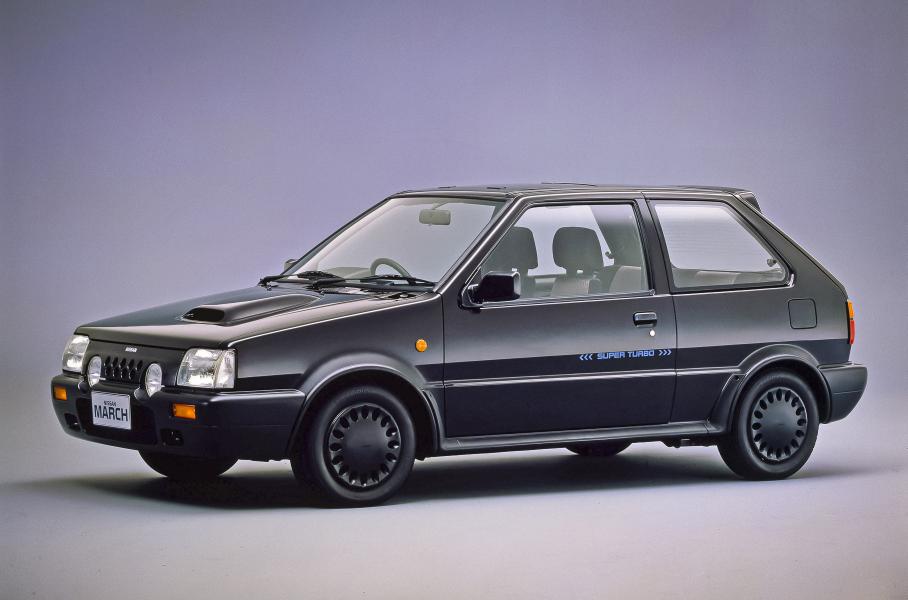
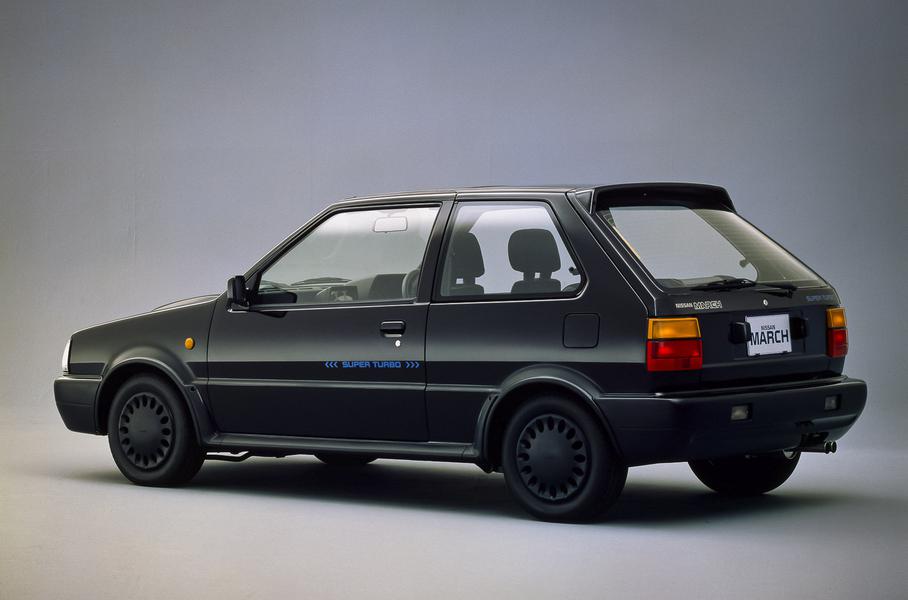
Equally interesting is the engine itself – a 930cc four-cylinder aluminum eight-valve MA09ERT developing 110 hp. at 6400 rpm. The Super Turbo could change a hundred in 7.7 seconds.
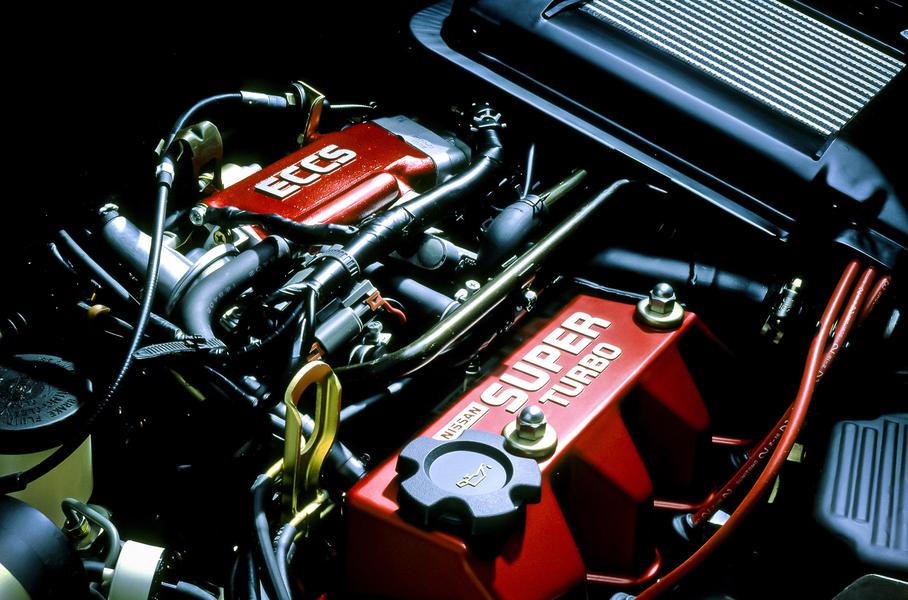
If a fearless pilot was driving, then a box with an aggressive front end, decorated with two fog lights, and a “nostril” on the hood could squeeze up to 180 km / h.
Mazda 323 / Familia GT-R
In the history of the Hiroshima company there were not only fashion rotary models, but also interesting hot-hatches based on the Familia / 323 line. Little beasts began to show teeth in the early eighties – the Familia XGI Turbo with a 115-horsepower 1.5-liter turbocharged engine brought variety to the palette of the fourth-generation model.
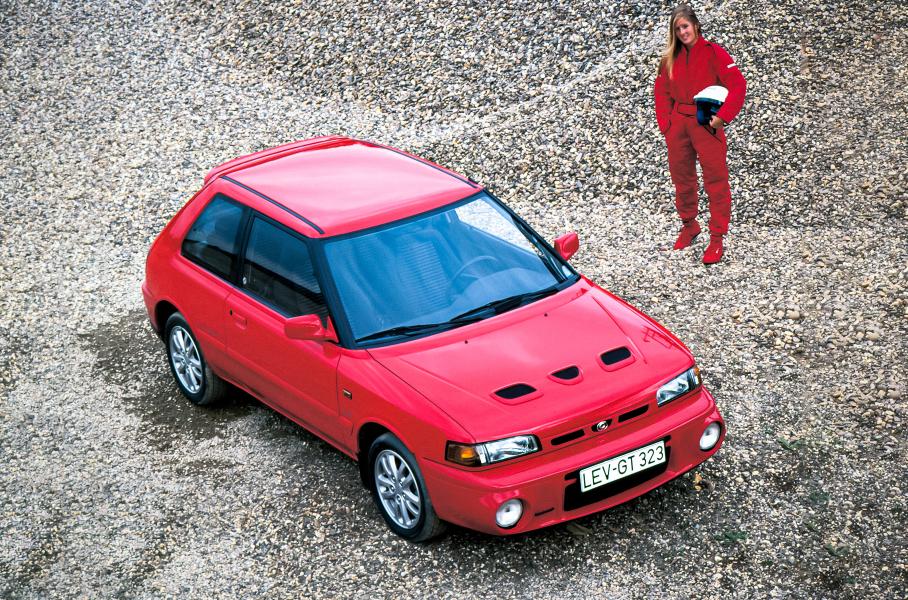
In the fifth generation, which appeared in 1985, passions began to heat up. Sophisticated drivers were offered a delicacy – modifications with 16-valve “turbo four” with a volume of 1.6 liters and 140 hp. The all-wheel drive system added piquancy to the novelty, although a variation with front-wheel drive was also offered. In 1988 Mazda tore the cover off of a limited homologation version of the 4WD GT-Ae for rally group A with a 150-horsepower engine and a rear differential locked by a viscous coupling …

It’s time to write a book on the topic of “hot” Mazda, so let’s move on to the main character of our story – the GT-R rally car, which was offered in the sixth generation of the model along with the GT-X modification. The homologation A-group hatchback owes its birth to the former driver and president of Mazda Rally Team Europe (MRTE) Achim Warmblode, who wrote a letter to the company’s headquarters in June 1988. The story was long. Warmblod, tired of watching other manufacturers’ successes in the global motorsport scene, cited Lancia’s triumph in rallying and urged Mazda executives to launch a “hot” modification for sports and public roads that would attract 323 young enthusiasts. The arguments proved to be convincing, and a positive response came from Japan.


There were much more technical differences. The 1.8-liter turbocharger was stuffed with reinforced pistons and connecting rods, more efficient injectors and other components. A new turbocharger with an enlarged frontal intercooler, coupled with other upgrades, increased the power from 185 to 210 hp. The transmission has a five-speed manual gearbox and a center differential locked by a viscous coupling. Alas, Mazda did not become the world rally champion, But the triumph on the WRC fields is a guarantee of legend and eternal glory. Lancer Evolution will confirm!
Dodge omni glh
Towards the end of our story, let’s fast forward overseas, where there is also a forgotten “hot” hatchback – this is the Dodge Omni GLH, one of the most extraordinary American cars of the eighties.

The massive Omni is nothing more than a Chrysler Horizon / Simca Horizon / Talbot Horizon adapted for the New World from the European division of the concern. But GLH was by no means a massive shy guy. Its abbreviation stands for Goes Like Hell (drives like crazy), and Carroll Shelby himself took part in the creation. In its debut 1984, the sports car was content with a naturally aspirated 2.2-liter engine with a new camshaft and slightly increased compression ratio, resulting in a power of 112 hp.


But a year later, an optional turbocharged version appeared and everything became more fun – the output increased to 148 hp. and 230 Nm at 3600 rpm. The American-style hot hatch wore the unusually low profile Goodyear Eagle GT 195 / 50HR15 tires, sports suspension, more responsive steering, larger front brake discs, and amazing grip in turns. 1986 saw the release of an even more ferocious Omni GLHS from the old Shelby with a 177-horsepower engine, capable of accelerating to 97 km / h (60 mph) in 6.5 seconds almost like a Chevy Corvette.
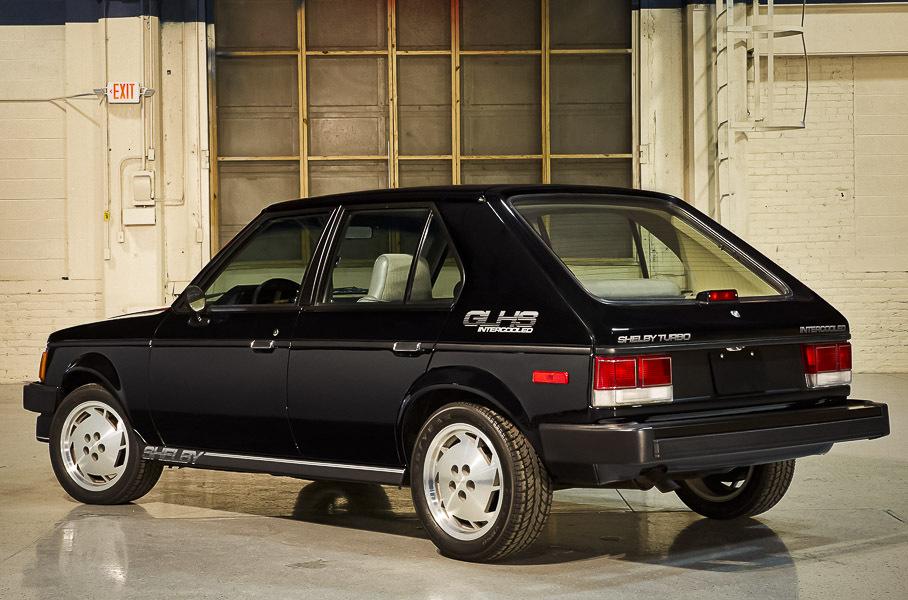
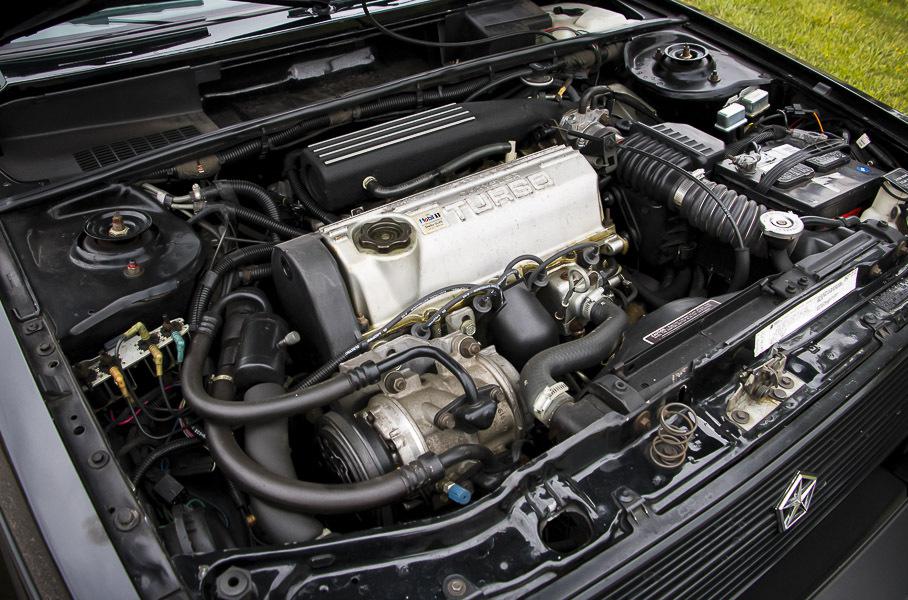
The sports car was offered exclusively in black and was released in a circulation of only 500 units, while the GLH sold 13,427 units.





